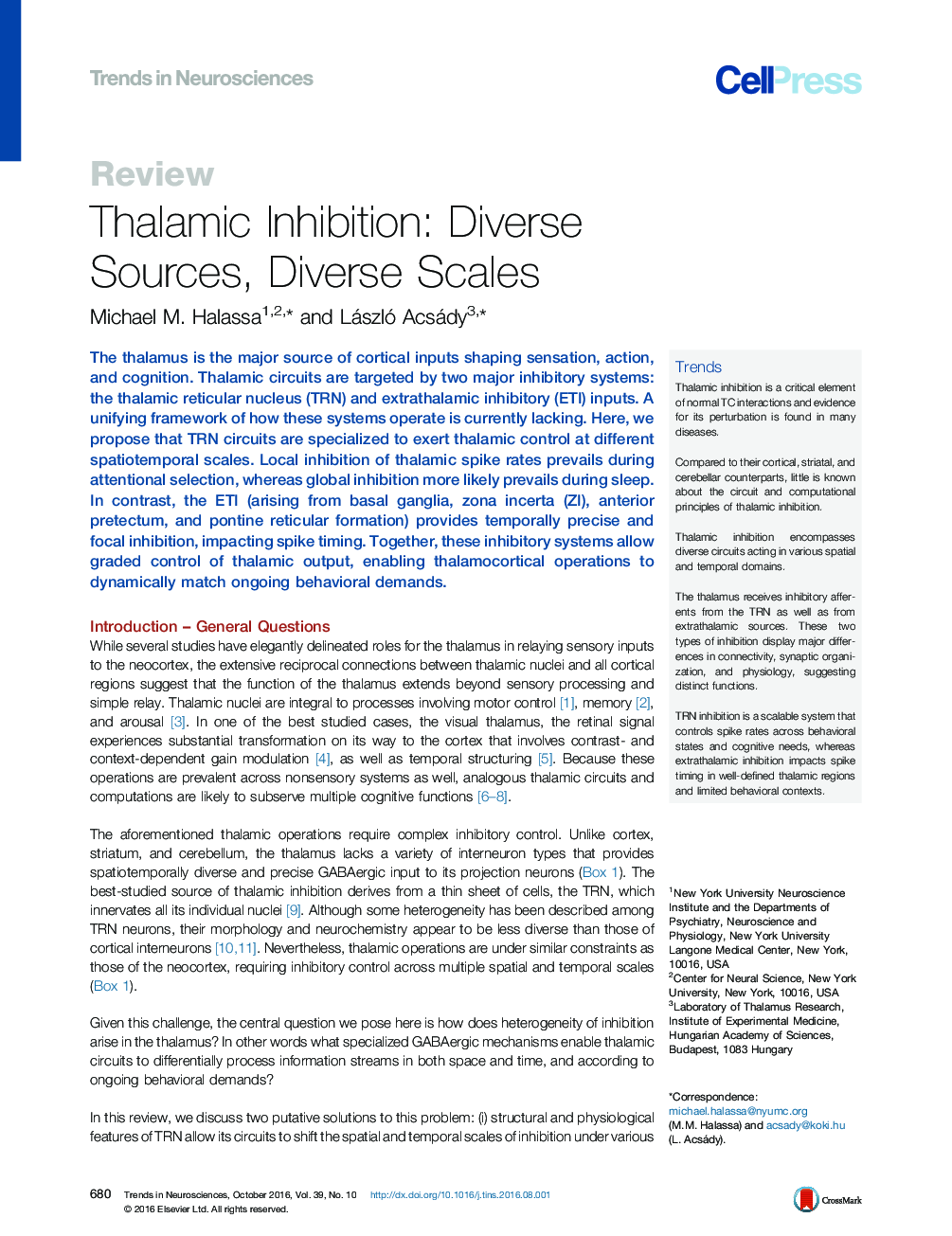| Article ID | Journal | Published Year | Pages | File Type |
|---|---|---|---|---|
| 4354081 | Trends in Neurosciences | 2016 | 14 Pages |
The thalamus is the major source of cortical inputs shaping sensation, action, and cognition. Thalamic circuits are targeted by two major inhibitory systems: the thalamic reticular nucleus (TRN) and extrathalamic inhibitory (ETI) inputs. A unifying framework of how these systems operate is currently lacking. Here, we propose that TRN circuits are specialized to exert thalamic control at different spatiotemporal scales. Local inhibition of thalamic spike rates prevails during attentional selection, whereas global inhibition more likely prevails during sleep. In contrast, the ETI (arising from basal ganglia, zona incerta (ZI), anterior pretectum, and pontine reticular formation) provides temporally precise and focal inhibition, impacting spike timing. Together, these inhibitory systems allow graded control of thalamic output, enabling thalamocortical operations to dynamically match ongoing behavioral demands.
TrendsThalamic inhibition is a critical element of normal TC interactions and evidence for its perturbation is found in many diseases.Compared to their cortical, striatal, and cerebellar counterparts, little is known about the circuit and computational principles of thalamic inhibition.Thalamic inhibition encompasses diverse circuits acting in various spatial and temporal domains.The thalamus receives inhibitory afferents from the TRN as well as from extrathalamic sources. These two types of inhibition display major differences in connectivity, synaptic organization, and physiology, suggesting distinct functions.TRN inhibition is a scalable system that controls spike rates across behavioral states and cognitive needs, whereas extrathalamic inhibition impacts spike timing in well-defined thalamic regions and limited behavioral contexts.
